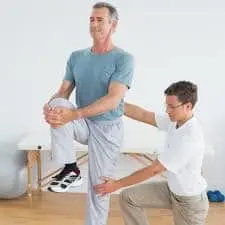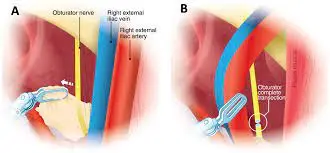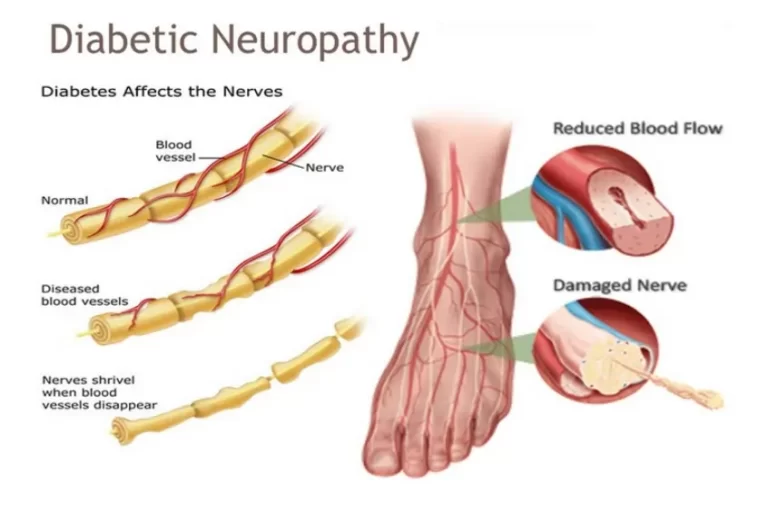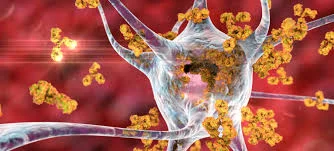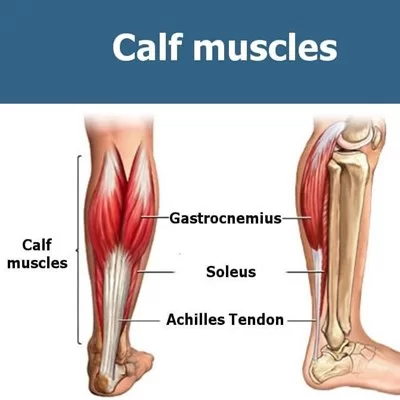Intercostal Muscle Strain
What is an Intercostal Muscle Strain?
Intercostal muscle strain refers to overstretch in the muscles located between the ribs. These muscles assist in breathing and torso movement. Pain can result from overuse, injury, poor posture, or conditions like inflammation or nerve irritation. Symptoms often include sharp or aching pain, worsened by movement or deep breathing.
The intercostal muscles are divided into three layers: the innermost intercostal muscles, the internal intercostal muscles, and the exterior intercostal muscles.
The innermost intercostal muscles are on the ribs’ surface, which aids in rib compression and stability. The internal intercostal muscles extend from the posterior to the anterior rib cage and are superior to the innermost intercostal muscles. They aid in stabilizing the rib cage during exercise and depress the ribs during expiration.
Last but not least, the outermost layer of the intercostal muscles, known as the external intercostal muscles, extends from the anterior to the posterior rib cage. They raise the ribs during inspiration and are in charge of the ribs’ movement during breathing.
Any layer of the intercostal muscles may get overstretched, strained, or even partially torn when a strain occurs, which can cause pain and breathing difficulties. Although there are ways to lessen pain and inflammation, intercostal muscle sprains are a medical disease that resolves on their own.
In order to help construct the chest wall and facilitate breathing, the intercostal muscles link to the ribs in various strata. Intercostal muscular strain is the result of an intercostal muscle being twisted, strained, or overstretched. We also examine the causes of these strains and the available treatments.
Clinically Relevant Anatomy
The muscles found inside the rib cage are known as intercostal muscles. The muscles that fill the gap between the ribs are composed of three layers: the outermost layer, the innermost layer, and the interior layer. The outermost layer, known as the external intercostals, is located just beneath the skin. It begins at the lower edge of the rib above, runs obliquely, and inserts into the upper edge of the rib below.
During inhaling, it causes the chest wall to expand. The intermediate layer, known as internal intercostals, helps to collapse the lung during expiration. It extends from the costal groove close to the inferior border of the rib above to the upper border of the rib below. The innermost intercostal muscle helps the internal and external intercostals operate by crossing many intercostal spaces.
Depending on the kind and severity of the injury, intercostal muscle strain can result in rib/chest pain, upper back pain, and altered breathing patterns. The patient may exhibit shallow, short breathing as a result of the pain. The muscles that run between two or more ribs are injured.
Mechanism of Injury
Intercostal muscle strains are not typically caused by everyday activities; rather, they occur as a result of weakening, overexertion, direct trauma from falls or auto accidents, blows from contact sports like hockey, or repetitive twisting of the torso.
- A direct impact to the rib cage, as may occur from a car accident, a tumble, or injuries from contact sports like hockey or football. wherein the ribs are abruptly pulled apart, causing the intercostal muscles to stretch or rip.
- Torso twisting can occur during lifting, while dancing or in yoga poses, and during some sports like tennis or golf. Excessive twisting of the torso during sports can happen when the ribs are separated from their usual range.
- Reaching aloft: As we can see when painting the ceiling, extended periods of overhead activities or lifting over the shoulder put excessive strain on the muscles.
- vigorous, repetitive motion, like hitting a tennis ball or rowing.
Causes of Intercostal Muscle Strain?
Overuse or repetition can result in intercostal muscle Strain; lifting heavy objects or playing sports like tennis or golf are examples; chest trauma, sudden twisting motions, reaching overhead, or repetitive forceful motions can also result in muscle pain.
Poor posture can result in a muscle pain when standing or sitting for a long time; weak muscles that are not properly conditioned for the activity (e.g., rowing, tennis, golfing, batting, or pitching) can result in a strain; and dehydration can cause fatigue and raise the risk of intercostal muscle pain or strain.
Intercostal muscle tension is typically not caused by routine activity. The most common cause of these strains is a muscle injury or overexertion.
An impact strike from contact sports like football or hockey that twists the torso beyond its natural range of motion, or a direct blow to the rib cage from a fall or auto accident
Twisting while lifting weights; twisting violently, like in tennis or golf; twisting from certain yoga poses or dance positions; reaching overhead, like when painting a ceiling; lifting a heavy object above shoulder height; and reaching overhead for extended periods of time while performing repetitive forceful motions, like striking a tennis ball. This is especially true when weaker muscles result from bad posture or insufficient exercise.
Symptoms of Intercostal Muscle Strain?
Pain in the chest or ribs, shortness of breath, restricted upper torso range of motion, and intercostal muscle spasms are some of the symptoms of intercostal muscle strain. A person may have dull or intense pain that gets worse when they move, breathe, cough, or sneeze. When the strain is considerable, there may be swelling and bruising. Swelling or soreness in the strained muscle’s location are further signs of intercostal muscular strain.
Depending on what caused the strain, the signs and symptoms of an intercostal muscle can vary slightly. However, symptoms are restricted to this location and frequently concern respiration because the intercoastal muscles in the body’s trunk are necessary for breathing.
Sharp upper back and rib pain, severe and abrupt pain, especially if caused by a blow to the chest or back, gradually getting worse after repetitive movements, like swimming, rowing, or other physical exercises, stiffness and tension in muscles that cause upper back pain, stiffness when bending or twisting the upper body, worsening pain when coughing, sneezing, or breathing in deeply, spasms of the intercostal muscles, and sensitiveness between the ribs.
Risk Factors of Intercostal Muscle Strain?
- Physical labor includes tasks like carrying heavy objects, standing up for extended periods of time, and twisting repeatedly.
- Intercostal muscles are strained in high-thrust sports because of the repetitive usage of the arm, shoulder, and upper back.
- Sports involving contact: when an abrupt, direct force strikes the upper body.
Diagnosis of Intercostal Muscle Strain?
A comprehensive medical history and physical examination are usually required to diagnose an intercostal muscle strain. The location and intensity of the pain, along with any other related symptoms, may be inquired about by the healthcare professional during the medical interview.
A history of trauma from falls or auto accidents, upper body twisting linked to the development of pain, and participation in sports that might have exacerbated the pain are other questions they might ask. The provider may examine the range of motion and apply light pressure to the affected area during the physical examination. To rule out other potential reasons for the pain, such as a rib fracture or other injury, imaging tests like an X-ray or MRI may also be prescribed.
A minor injury affecting only a few muscle fibers is called a grade one muscular strain. Usually, this grade of muscle strain has little effect on day-to-day activity. A moderate damage involving a greater number of muscle fibers is called a grade two muscle strain. This level of muscle strain may interfere with day-to-day activities and necessitate more intensive care. Last but not least, a grade three muscle strain is a serious injury that involves a full muscle tear and may necessitate surgery as well as a longer duration of physical rehabilitation.
For instance, this can involve a pulmonary examination, which aids in the diagnosis of issues with the body’s trunk. Additionally, the doctor will inquire about any recent sports participation or injuries.
An MRI or ultrasound scan are examples of imaging tests that a medical expert may request. This can assist in ruling out additional problems, including a broken rib.
Differential Diagnosis of Intercostal Muscle Strain:
Because intercostal muscle strains are relatively hypomobile and rarely cause injury, they can be confused with upper back pain. Long-term bad posture is the cause of upper back discomfort, which is characterized as a severe, searing ache that occasionally radiates to the shoulder and neck. Unlike the discomfort from a lung condition, which is hard to identify, the patient may locate the area of pain associated with intercostal strain, which is caused by trauma overexertion activity.
Treatment of Intercostal Muscle Strain
The main treatment for an intercostal muscular strain is prevention, which may involve reducing the chance of straining the muscle while performing certain activities. Stretching before and after physical exercise, drinking plenty of water, and using the right form and technique when lifting or doing other physical work are some ways to prevent muscle strains.
Rest, the application of cold or heat, and over-the-counter pain and anti-inflammatory drugs like acetaminophen, naproxen, or ibuprofen are all possible treatments for muscle strains. These techniques aid in lowering pain and inflammation. In severe cases of intercostal muscle tension, physical therapy or additional medical treatment, such as injections, may be indicated. A physical therapist can assist in creating a list of exercises and other methods to help strengthen the affected muscles, increase mobility, and lessen pain.
Moderate strains of the intercostal muscles can take three to seven weeks to heal, whereas mild strains usually go away in a few days. It may take much longer for severe strains that involve a full tear to heal.
If the injury causing the intercostal muscle tension is not severe and the symptoms are modest, home therapy can be sufficient. The following are examples of home treatment options:
- Using a cold pack or ice pack first, then heat therapy. Adhesive heat wraps, heating pads, and a warm bath are examples of heat therapy alternatives.
- letting the muscular strain heal by taking a few days off from all physical activity and resting.
- using painkillers to lessen pain and swelling. Intercostal muscle strain can be treated with over-the-counter drugs such as ibuprofen or acetaminophen.
- Holding a pillow against the injured muscle will splint the area if breathing becomes difficult. However, breathing difficulties require immediate medical intervention.
Physical Therapy Treatment of Intercostal Muscle Strain:
After the inflammation has decreased, physical therapy begins, with an emphasis on pain management techniques, supervised stretching, endurance-boosting muscle training, posture correction, and breathing techniques.
During a deep breathing exercise, the patient is advised to use diaphragmatic breathing while supporting the painful area with a pillow.
Under supervision, stretching tight muscles can lead to muscle imbalance and improper mechanism stretching, such as roller stretch, certain yoga poses, or upper back extension. However, if the strain is caused by overstretching the muscle, further stretching may hurt and cause muscle weakness, which should be managed with a strength training program.
Strength training Backward weightlifting exercises and thoracic extension exercises with breath holding for a few seconds and a slow exhale have been demonstrated to improve thoracic kyphosis and reduce intercostal muscular soreness in cases of muscle imbalance.
Diaphragmatic Breathing
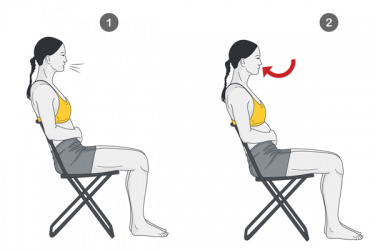
- With one hand on your chest and the other on your stomach, lie flat on your back.
- Take a deep breath through your nose, keeping your chest motionless and allowing your belly to rise.
- Feel your belly drop as you slowly release the breath through your mouth.
- For five to ten minutes, focus on breathing slowly and deliberately.
Side Stretches
- For balance, place your feet shoulder-width apart and stand tall.
- Smoothly lean to your left while keeping your body in alignment.
- To avoid strain, do not twist or reach too much.
Thoracic Rotation
- Maintaining your hips stationary, slowly shift your upper body to the right as much as feels comfortable.
- Return to the center and twist to the left after holding this position for five seconds.
Cat-Cow Stretch
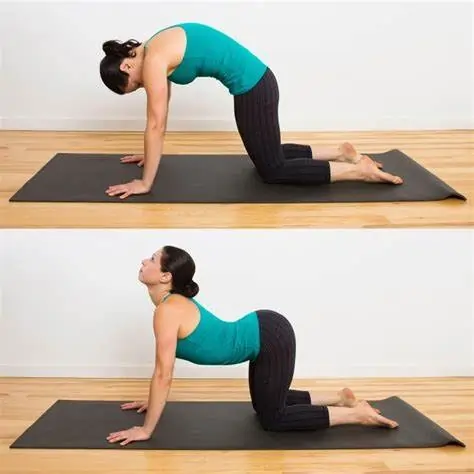
- Place your knees behind your hips and your wrists beneath your shoulders to begin on all fours.
- Tuck your chin to your chest, arch your back, and exhale (Cat position).
- Take a breath, bring your abdomen down to the floor, and raise your head (Cow posture).
- Focus on aligning and stretching your spine as you move lightly.
Wall Stretch
- Place your palms flat against the wall at shoulder height and stand about a foot away.
- Lean softly against the wall until your sides and chest start to stretch, then take a small step back while maintaining a straight arm position.
- Repeat the stretch three times while holding it for 20 seconds.
Shoulder Rolls
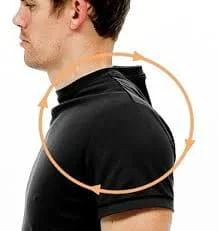
- Stand or sit upright, shoulders relaxed.
- For ten repetitions, gently roll your shoulders forward in wide, fluid circles.
- Change course and roll backward ten more times.
Rib Cage Stretch
- Take a seat upright on the floor or in a chair.
- Pull your elbows back and interlace your fingers behind your head.
- Breathe deeply, extend your ribs, and hold the position for ten seconds.
- To release the strain, slowly exhale.
Prevention of Intercostal Muscle Strain:
The severity of the injury determines the duration of an intercostal muscle strain. A mild tension of the intercostal muscles usually goes away in a few days. Severe strains including a full muscle tear may require more time to heal, while moderate strains may heal in 3–7 weeks.
Most rib injuries, including sprains of the intercostal muscles, should heal in six weeks.
Stretching and warming up before intense workouts can help prevent future muscular strains. When it comes to exercising or playing sports, it’s crucial to avoid going overboard. Intercostal muscular strain can be avoided by maintaining strong muscles.
Conclusion
A common ailment that affects the muscles between the ribs is intercostal muscular pain, which can be caused by tension, injury, inflammation, or underlying medical disorders. Although usually not severe, it can be quite uncomfortable and interfere with breathing and day-to-day functioning.
Physical therapy, medication-assisted pain management, rest, and lifestyle changes are all possible forms of treatment. To rule out more serious illnesses, a medical evaluation is required when pain is persistent or accompanied by other troubling symptoms. Intercostal muscle soreness can be avoided by maintaining good posture, warming up before exercise, and avoiding undue tension.
FAQs
What causes intercostal muscles to weaken?
Physical labor, which usually involves a lot of actions that might cause intercostal injuries, such as bending, reaching, heavy lifting, and/or severe torso twisting. Intercostal strain is one of the many injuries that can be avoided with safe lifting practices.
How can intercostal muscles be healed the quickest?
Heat Therapy: To alleviate the strain, you can move from using an ice pack to a heating pad once the first few days have gone by. It may be possible to reduce pain and hasten the healing process by heating the affected muscles. Pain Relievers: Certain drugs can lessen the severity of the strain-related pain you feel.
How are the intercostal muscles exercised?
Take a deep breath, then extend your arms to the right to lengthen your left side intercostal muscles as you exhale. After taking a breath and returning to the center, extend your arms to the left while sensing the stretch in your right intercostal muscles. On each side, repeat twice more.
Does severe intercostal Strain exist?
Intercostal neuralgia-related chronic pain can also impair sleep and limit movement. Additionally, it may make breathing difficult. Additionally, there are several symptoms that intercostal neuralgia shares with other potentially dangerous medical disorders.
Is massage effective in treating intercostal Strain?
Your physical therapist will concentrate on pain management, back and breathing muscle strengthening, and stretching. Soft tissue massage and manual therapy are other helpful methods for accomplishing this. Restoring your ability to breathe and move freely is the aim.
Which kind of physician handles intercostal Strain?
This is the neurologist’s area of expertise. Complex therapy is sometimes administered in conjunction with a cardiologist and a therapist (gastroenterologist, pulmonologist).
Is it true that intercostal muscles relax?
The ribs migrate lower and inward under their own weight as the intercostal muscles relax. Air is driven out of the lungs as a result of the chest’s size being reduced and its air pressure rising.
Which workouts are beneficial for intercostal muscles?
Strength training Backward weightlifting exercises and thoracic extension exercises with breath holding for a few seconds and a slow exhale have been demonstrated to improve thoracic kyphosis and reduce intercostal muscular soreness in cases of muscle imbalance.
How can intercostal Strain be avoided?
Options for Treating Intercostal Muscle Strain
Heat packs promote circulation and muscle relaxation, while cold packs lessen inflammation. It is advised to use an ice pack or cold pack to the affected area for the first 48 hours of pain in order to minimize inflammation and ease pain.
Does Strain in the intercostal nerve go away?
Intercostal Neuralgia: With treatment, intercostal neuralgia may resolve in a few weeks to months, depending on the underlying reason. Additionally, symptoms may go away without medical intervention. On the other hand, some people will endure chronic pain for a long time.
How can someone who has intercostal muscular soreness sleep?
Your intercostal muscles can feel less pressure if you raise your upper body a little. To create a slight inclination, place a pillow beneath your head and upper back. This can facilitate breathing and lessen ribcage tension. sleeping on one’s side.
Is intercostal Strain a result of stress?
The following are some causes of anxiety-related chest pain: Non-cardiac causes: the esophagus or musculoskeletal system may be the source of the pain. The intercostal chest wall muscles may tension or spasm as a result of hyperventilation, which is characterized by episodes of rapid or quick breathing.
How much time does it take for intercostal muscles to recover?
A physical therapist can assist in creating a list of exercises and other methods to help strengthen the affected muscles, increase mobility, and lessen pain. Moderate strains of the intercostal muscles can take three to seven weeks to heal, whereas mild strains usually go away in a few days.
What is the sensation of intercostal Strain?
The primary sign of intercostal neuralgia is pain, which typically manifests as a band around your chest or belly. This pain might be continuous or sporadic, and it may accompany tingling and numbness. The actual pain, which may persist long after the underlying cause has subsided.
How is Strain in the intercostal muscles treated?
Applying a cold pack or ice pack, then using heat therapy.
letting the muscular strain heal by taking a few days off from all physical activity and resting.
using painkillers to lessen pain and swelling.
Holding a pillow against the injured muscle will splint the area if breathing becomes difficult.
References
- Linkage, D. (2024, October 15). Exercises for intercostal muscle strain in winters. ER Of Dallas TX. https://erofdallastx.com/blog/exercise-for-intercostal-muscle-strain/
- Axtell, B. (2023, February 8). How to identify and treat an intercostal muscle strain. Healthline. https://www.healthline.com/health/intercostal-muscle-strain
- Tran, H., MD. (n.d.). Intercostal muscle strain symptoms and diagnosis. Spine-health. https://www.spine-health.com/conditions/upper-back-pain/intercostal-muscle-strain-symptoms-and-diagnosis



